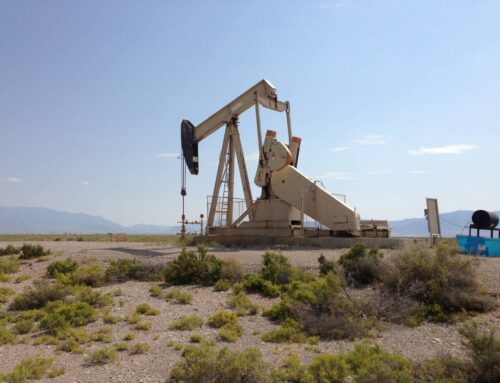The Environmental Protection Agency (EPA) has finalized its “Standards of Performance for New, Reconstructed, and Modified Sources and Emissions Guidelines for Existing Sources: Oil and Natural Gas Sector Climate Review,” marking a significant update to methane emissions policy in the United States. This rule is particularly focused on the petroleum and natural gas sectors, two major contributors to the nation’s methane emissions.
The EPA’s final rule will establish performance standards for new sources (NSPS) “that commenced construction, reconstruction, or modification after December 6, 2022” as well as Emission Guidelines (EG) under section 111(d) of the Clean Air Act for greenhouse gas (GHG) emissions from existing sources. These guidelines are intended to inform states in the development, submittal, and implementation of state plans that are required to establish standards of performance for emissions of GHGs from their designated facilities.
- Monitoring at All Wells: The rule requires operators routinely monitor for leaks at the well pad level and address them in a timely manner regardless of a facility’s size and type, although the inspection schedule and requirements may differ.
- Enhanced Leak Detection and Reporting: The rule introduces stricter requirements for leak detection and the reporting of gas leaks in the oil and gas production process. Operators at new and existing sources are required to repair the source of the leak within a maximum of 60 days of detection, depending on how the leak was detected, with extensions of no more than 2 years available in under specific circumstances such as technological infeasibility.
- Additional Steps to End Routine Flaring: The final rule took additional steps to end routine flaring. Temporary flaring is only authorized for between 24 hours and 30 days, depending on the circumstances.
- Wells that commence construction two years after the rule is effective will no longer be allowed to flare associated gas except for specific, temporary circumstances like safety concerns.
- Wells that commence construction within two years of the rule being in effect will be given two years to retrofit their equipment to comply with the flaring ban.
- Existing sources, including wells that commence construction between the announcement of the rule and the date the rule is effective, are allowed to flare “provided that the owner or operator documents and certifies that routing the associated gas to a sales line, using it as onsite fuel or for another beneficial purpose, or injecting/reinjecting it are technically infeasible.” Sources must reapply for the infeasibility exemption, including undergoing a demonstration, every year. Existing sources with less than 40 tons per year of associated methane gas may routinely flare without an infeasibility exemption.
- Limiting Temporary Venting: Temporary venting is limited to 30 minutes during monitoring or leakage tests and 12 hours in emergency situations for safety concerns.
- Addressing Super-Emitter Events: The rule aims to more effectively capture and report abnormally large-scale emission events that disproportionately contribute to total methane emissions from the oil and gas sector. After super-emitter events, defined under this rule as an emission rate of 100 kg/hr of methane or greater, are recorded by EPA-certified third parties using EPA-approved remote sensing technologies (e.g., satellites), the EPA will notify the owner or operator after reviewing third-party notifications of the presence of a super-emitter event at or near its oil and gas facility. The owner or operator will be required to investigate within 5 days and report the results to the EPA within 15 days. The EPA will publish super emitter event data in an online database “shortly after it is received” to improve public health efforts and increase the transparency of the Super Emitter Program.
The final EPA rule aligns with many of the recommendations made by TCS, such as taking additional steps to end routine flaring of associated gas and expanding public participation and improving accessibility of data of the Super Emitter Program.
Addressing the wasteful practices of gas flaring and venting will not only result in environmental benefits but will also preserve a valuable energy source from being wasted. Additionally, accurately reporting and quickly addressing large-scale emission events, known as super-emitter events, is necessary because these emissions account for significant portion of total methane emissions but tend to be underrepresented in current data.
The oil and natural gas industry is the United States’ largest industrial emitter of methane, a highly potent greenhouse gas. Emissions of methane from human activities are responsible for about one-third of the warming due to well-mixed greenhouse gases and constitute the second most important warming agent arising from human activity after carbon dioxide.
According to analysis by Taxpayers for Common Sense and Environmental Defense Fund, 163 billion cubic feet of oil and gas methane was wasted from U.S. public and tribal lands in 2019, translating into nearly $64 million in lost potential royalty revenue. This amount of lost methane could meet the needs of 2.2 million households, nearly as many households as in New Mexico, North Dakota, Utah, and Wyoming combined.
In Louisiana, oil and gas companies wasted over $82 million worth of gas in 2019, which could have met more than two-thirds of the state’s residential natural gas demand for a year. This waste resulted in nearly $2.5 million in lost tax and royalty revenue. Flaring, the combustion of gas prior to releasing it, was identified as a leading cause of methane waste in the state, responsible for roughly a fifth of all methane wasted. In North Dakota, these companies wasted over $680 million worth of gas in 2019, enough to meet the state’s entire residential natural gas demand 16 times over. This waste resulted in $43.3 million in lost potential tax revenue for federal, state, and tribal governments. Flaring was identified as a leading cause of waste, responsible for roughly 95% of all methane wasted in North Dakota.
These findings underscore the importance of federal safeguards and stronger guidelines for oil and gas operators to reduce methane waste and pollution, which would not only protect the environment and public health but also increase revenue for state priorities.
The final rulemaking takes a significant step forward in mitigating climate-destabilizing pollution and protecting human health by reducing methane and VOC emissions from the oil and natural gas industry. These mitigations are based on proven, cost-effective technologies already required by prior EPA regulations or states’ regulations or deployed by industry leaders to reduce this dangerous pollution.
As the rule is implemented, it will be essential to monitor its effectiveness and ensure that it meets the critical goal of reducing greenhouse gas emissions in a meaningful way.











Get Social